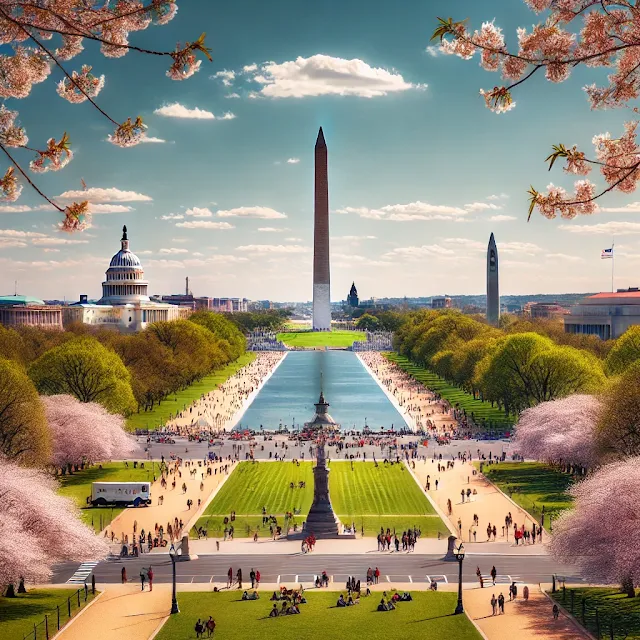The Ultimate Guide to Visiting the National Mall in Washington, D.C.
The "National Mall" in Washington, D.C., is more than just a large green space—it's a symbol of American history, democracy, and culture. Stretching from the "Capitol Building" to the "Lincoln Memorial", this iconic location hosts millions of visitors each year who come to experience its monuments, museums, and rich history.
What is the National Mall?
The National Mall is a large, open park in downtown Washington, D.C., and is part of the National Park Service. It spans over two miles and is bordered by some of the most famous landmarks in the United States. The Mall serves as a backdrop for countless important events, such as presidential inaugurations, historic protests, and national celebrations, including the annual Fourth of July fireworks.
Key Landmarks to Visit at the National Mall
1. Lincoln Memorial
Standing tall at the western end of the Mall, the "Lincoln Memorial" is one of the most visited monuments in the country. This tribute to the 16th president of the United States, Abraham Lincoln, symbolizes the fight for freedom and unity.
2. Washington Monument
The towering Washington Monument, located in the center of the Mall, honors the nation's first president, George Washington. At 555 feet tall, it is the tallest structure in Washington, D.C., and offers panoramic views of the city when visitors take the elevator to the observation deck.
3. U.S. Capitol Building
At the eastern end of the Mall is the Capitol Building, the seat of the U.S. Congress. Its stunning architecture and domed roof are iconic symbols of American government.
4. World War II Memorial
A moving tribute to the soldiers and civilians who served during World War II, this memorial features a series of pillars and fountains representing the unity and sacrifice of the nation during that time.
5. Smithsonian Museums
The National Mall is home to 11 Smithsonian Museums, including the "National Museum of American History", "National Air and Space Museum", and the "National Museum of Natural History". These world-class institutions offer free admission and contain vast collections of art, artifacts, and exhibits covering a wide range of subjects.
Best Time to Visit the National Mall
The National Mall is a year-round destination, but the best time to visit is during the "spring" or "fall". Spring, particularly late March to April, is famous for the "Cherry Blossom Festival", when the area is filled with blooming cherry blossoms. Fall offers cooler temperatures and a beautiful display of fall foliage.
How to Get Around the National Mall
The National Mall is easily accessible via public transportation. Visitors can take the "Metrorail" to stations like "Smithsonian", "L’Enfant Plaza", and "Federal Triangle", which are all close to major attractions. Walking is the best way to experience the Mall, but there are also options like bike rentals and the DC Circulator bus, which provides a convenient loop around the Mall’s key spots.
Tips for Visiting the National Mall
1. Plan Ahead: While it’s easy to get overwhelmed by the number of landmarks and museums, plan your trip in advance to maximize your time.
2. Bring Comfortable Shoes: You’ll be walking a lot! Make sure to wear comfortable shoes.
3. Pack Snacks and Water: There are some food options around the Mall, but packing snacks and water will keep you energized throughout the day.
4. Check for Events: The National Mall hosts many events throughout the year. Check the schedule to see if you can catch a festival, concert, or protest during your visit.
Conclusion
Whether you're interested in American history, architecture, art, or simply taking in the beauty of the nation’s capital, the 'National Mall' offers something for everyone. It's not just a destination—it's an experience that connects visitors with the past, present, and future of the United States. Plan your visit today and take in the sights and sounds of one of the most iconic places in the world.

Comments
Post a Comment